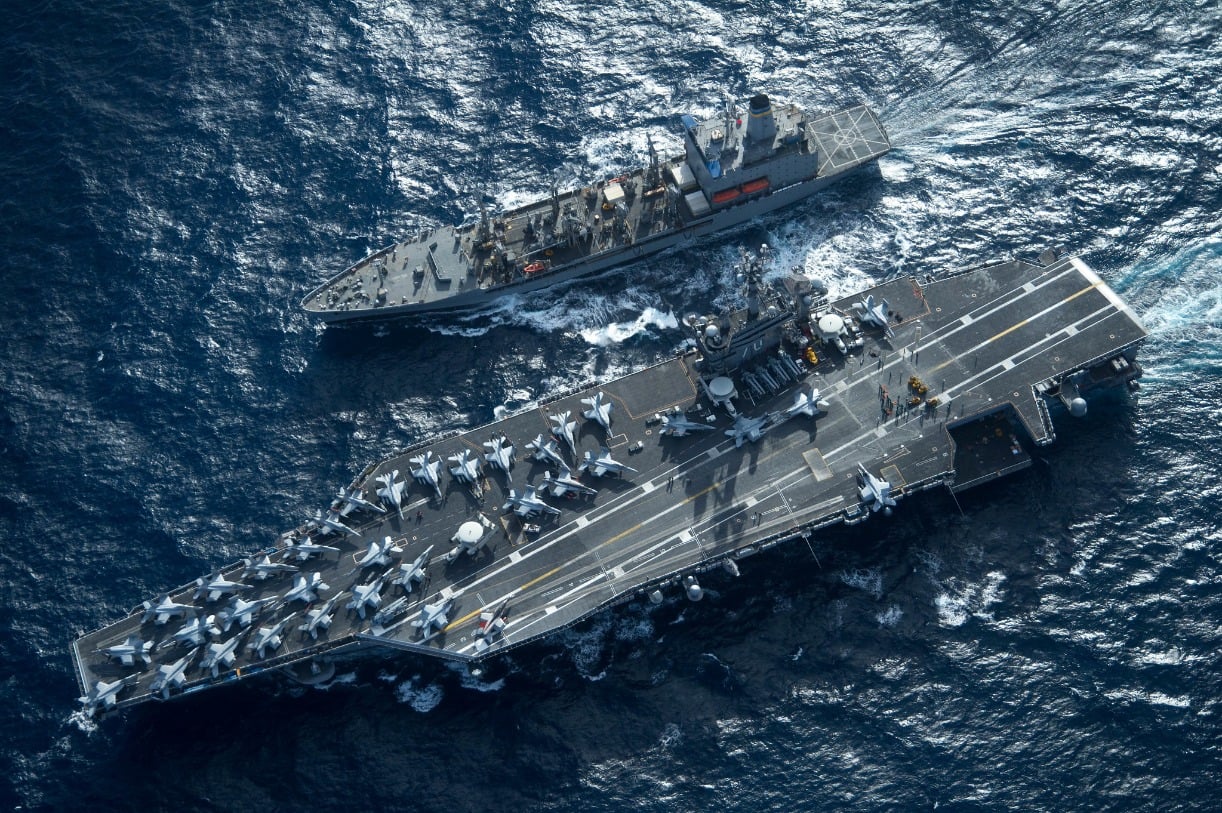USS Essex: The Aircraft Carrier That Helped Make the U.S. Navy a Superpower
USS Essex (CV-9), the lead ship of the Essex-class aircraft carriers, had a storied career that significantly impacted U.S. naval history. Laid down in April 1941 and commissioned in December 1942, Essex served extensively in the Pacific Theater during World War II, surviving a devastating kamikaze attack in 1944 that resulted in the loss of 15 sailors.
Summary and What You Need to Know: USS Essex (CV-9), the lead ship of the Essex-class aircraft carriers, had a storied career that significantly impacted U.S. naval history. Laid down in April 1941 and commissioned in December 1942, Essex served extensively in the Pacific Theater during World War II, surviving a devastating kamikaze attack in 1944 that resulted in the loss of 15 sailors.
-After decommissioning post-war, she was modernized and recommissioned in 1951 to serve in the Korean War. Essex also played roles in the Bay of Pigs invasion and the Cuban Missile Crisis.
-Before her final decommissioning in 1969, she had the honor of recovering the Apollo 7 capsule, contributing to the early days of the U.S. space program.
USS Essex: The Aircraft Carrier That Made History from WWII to Apollo 7
The Pacific Theater of World War II was possibly the most epic naval conflict in human history. The showdown between the United States and Imperial Japan marked a turning point in the world order, and more specifically, in the hierarchy of naval vessels as the era of the battleship gave way to that of the aircraft carrier.
Perhaps the most important carrier class of the conflict was the Essex class, whose lead ship, USS Essex (CV-9), was one of the most storied vessels in U.S. naval history.
Introducing the Essex
During the frenetic shipbuilding spree of the early 1940s, 24 Essex-class carriers were completed. The class's lead ship, CV-9, would have a remarkable career at the forefront of history, bearing direct witness to World War II, the Korean War, the Cuban Missile Crisis, and the Apollo 7 mission.
First laid down in April 1941, Essex’s building timeline was accelerated after the Japanese attacked Pearl Harbor. Essex was launched in July 1942 and commissioned on the last day of the year. The newly minted carrier was then deployed to the Pacific Theater, where she experienced heavy and prolonged action. Essex was relatively fortunate in that she did not suffer damage until late 1944, in the waters off the Philippine Islands.
On November 25, 1944, a kamikaze attack struck the port edge of Essex’s flight deck. The Japanese plane connected with American planes on the flight deck that were fueled and waiting for takeoff. The resultant fireball caused significant damage, claimed the lives of 15 sailors, and wounded 44 more.
A new life for USS Essex
After the Japanese surrender Essex would be decommissioned, like so many American vessels. But in 1951, Essex was recommissioned after a modernization overhaul that included construction of a new flight deck and a streamlined superstructure. It then deployed to assist in the Korean War.
Essex was peripherally involved in one of the U.S.’s biggest geopolitical missteps, the Bay of Pigs invasion. Originally, the plan was for Essex to provide close air support for the CIA bombers that were to be deployed for the invasion. Essex was even deployed to the waters off the coast of Cuba, for reasons unknown to the crew. At the last moment, President John F. Kennedy called off the Essex air support. The invasion failed and is remembered as a failure of timidity.

Essex was used more effectively in October 1962, when she assisted in the naval quarantine of Cuba, which would come to be known as the Cuban Missile Crisis – the closest the Cold War ever came to escalating into a full-scale nuclear exchange.
Before decommissioning for the last time, in 1969 Essex would receive the honor of recovering the Apollo 7 capsule after its splashdown just north of Puerto Rico. Apollo 7 was the first crewed flight in the Apollo program, which would take human beings to the surface of the moon.
About the Author: Harrison Kass, Defense Editor
Harrison Kass is a defense and national security writer with over 1,000 total pieces on issues involving global affairs. An attorney, pilot, guitarist, and minor pro hockey player, Harrison joined the US Air Force as a Pilot Trainee but was medically discharged. Harrison holds a BA from Lake Forest College, a JD from the University of Oregon, and an MA from New York University. Harrison listens to Dokken.
Image Credit: Creative Commons.


